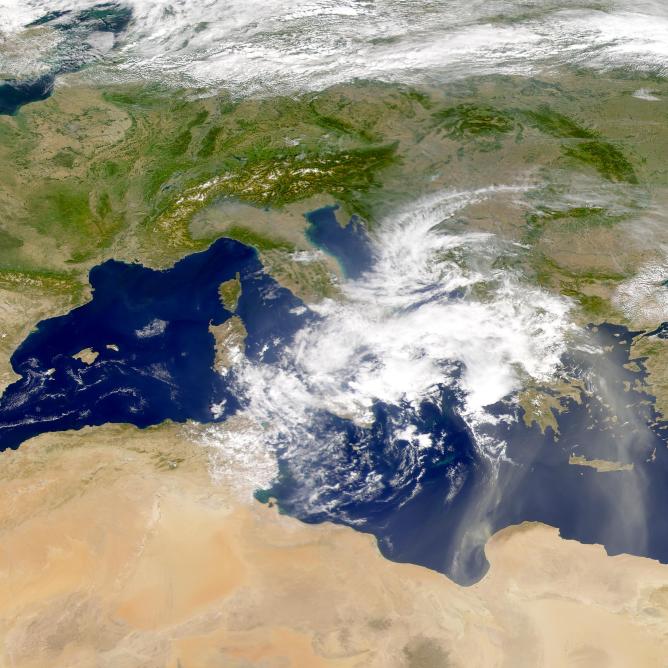Modeling Ocean’s Most Abundant Oxygen Producer
 Researchers use MITgcm to explore the response of Prochlorococcus to changes in the marine environment.
Researchers use MITgcm to explore the response of Prochlorococcus to changes in the marine environment.
Better Biogeochemical Modeling
 New global-ocean, data-constrained DIC budget uses the ECCO-Darwin ocean biogeochemistry state estimate.
New global-ocean, data-constrained DIC budget uses the ECCO-Darwin ocean biogeochemistry state estimate.
An Ocean of Plastic
 Using their hybrid MITgcm-plastic model a Chinese-US collaboration explores the fate of the excess trash generated by COVID.
Using their hybrid MITgcm-plastic model a Chinese-US collaboration explores the fate of the excess trash generated by COVID.
Med Modeling
 A team of Italian climate modelers has been evaluating the performance of a new version of the Regional Earth System Model (RegCM-ES) over the Mediterranean region. The model uses MITgcm for its ocean component.
A team of Italian climate modelers has been evaluating the performance of a new version of the Regional Earth System Model (RegCM-ES) over the Mediterranean region. The model uses MITgcm for its ocean component.
Blooming Antarctica
 Researchers use MITgcm to understand how phytoplankton blooms and inorganic carbon respond to sea-ice variability in the West Antarctic Peninsula.
Researchers use MITgcm to understand how phytoplankton blooms and inorganic carbon respond to sea-ice variability in the West Antarctic Peninsula.
Exploring Zooplankton Dynamics in the Gulf of Mexico
 FSU graduate student Taylor Shropshire has been using MITgcm to explore zooplankton dynamics in the Gulf of Mexico.
FSU graduate student Taylor Shropshire has been using MITgcm to explore zooplankton dynamics in the Gulf of Mexico.
Shelf Life
 This month we focus on work led by Hajoon Song, a postdoc at MIT, who has been using MITgcm to explore nutrient sources for the Patagonia Shelf Region.
This month we focus on work led by Hajoon Song, a postdoc at MIT, who has been using MITgcm to explore nutrient sources for the Patagonia Shelf Region.
Probing Phytoplankton in the Agulhas
 This month we report on researchers using MITgcm to explore the role of Agulhas Rings in plankton transport observations from the Tara Oceans Expedition.
This month we report on researchers using MITgcm to explore the role of Agulhas Rings in plankton transport observations from the Tara Oceans Expedition.
Ocean Biology Meets Physics
![]() In this video, Mick Follows describes his group’s work using MITgcm and ECCO2 products to better understand the global carbon cycle and plankton populations.
In this video, Mick Follows describes his group’s work using MITgcm and ECCO2 products to better understand the global carbon cycle and plankton populations.
Anthropogenic CO2 transport in the Southern Ocean.
 Taka Ito, Molly Woloszyn and Matt Mazloff have been studying anthropogenic CO2 transport in the Southern Ocean. Using MITgcm’s adjoint and offline capabilities, the team find a clear correlation between the pattern of carbon uptake and oceanic vertical exchange in strong support of wind-driven primary regulation of Southern Ocean ACO2 transport…
Taka Ito, Molly Woloszyn and Matt Mazloff have been studying anthropogenic CO2 transport in the Southern Ocean. Using MITgcm’s adjoint and offline capabilities, the team find a clear correlation between the pattern of carbon uptake and oceanic vertical exchange in strong support of wind-driven primary regulation of Southern Ocean ACO2 transport…
